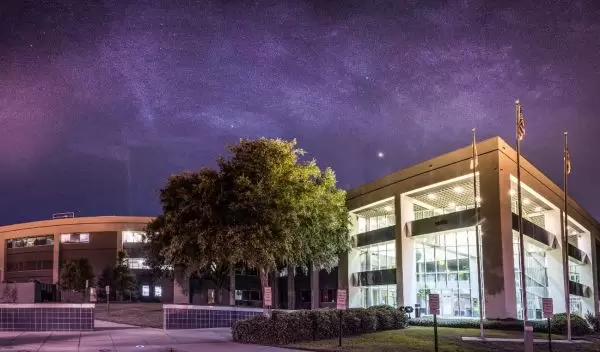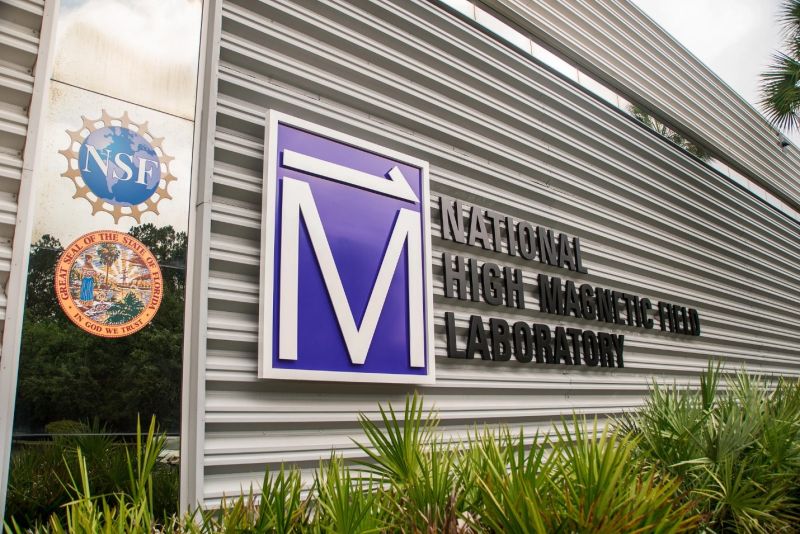
NSF to sustain the world's most powerful magnet lab through 2027
The U.S. National Science Foundation will invest an additional $195.5 million over the next five years in NSF’s National High Magnetic Field Laboratory. This investment maintains the National MagLab as a world-class facility, providing researchers and scientists with access to a range of powerful instruments and magnets including the world's most powerful MRI machine and the world's most powerful superconducting magnet.
"The U.S. National Science Foundation is proud to support this unique and world-leading research facility through a vibrant partnership with our three collaborating institutions and the state of Florida," said NSF Director Sethuraman Panchanathan. "NSF's continued support for the National High Magnetic Field Laboratory drives the democratization of access to high magnetic fields; enables worldwide discoveries at the forefront of science, engineering and technology; and helps develop a highly skilled and diverse workforce."
These powerful magnets coupled with the expertise and unique instruments only available at NSF’s MagLab have facilitated many recent discoveries across physics, materials science, chemistry, biology and engineering, including the below.
- A unique phenomenon known as "Lazarus superconductivity" was observed under the influence of both continuous and pulsed high magnetic fields, where superconductivity arises, perishes, then returns to life in a unique uranium-based compound.
- With the power of a 21 tesla ion cyclotron resonance magnet system, researchers learned that exposure to sun and water causes thousands of chemicals to leach from road pavement into the environment.
- Using the 36 tesla series connected hybrid magnet, scientists found that interactions between strings of bonded water molecules and a small protein were much stronger and longer-lasting — more than a million times longer — than researchers had previously believed, further showing the role "water wires" play in cell function.
- A mini magnet less than four inches in size, made of rare-earth barium copper oxide, or REBCO, superconductors and no insulation, broke a record for magnetic field strength, reaching half a tesla more than the lab's 45 tesla hybrid magnet.
"High magnetic fields unleash unique probing capabilities that enable scientists to address fundamental questions in a wide swath of disciplines, including materials science, physics, chemistry, biology, engineering and medicine," said Leonard Spinu, NSF's program director for NSF’s MagLab. "The National High Magnetic Field Laboratory continues to lead by forging paths for advances with significant societal impacts, from the next generation of microelectronics and quantum devices, to clean energy technologies, to advances in medical diagnoses and treatments."
The NSF’s MagLab is a partnership among NSF, Florida State University, the University of Florida, the U.S. Department of Energy's Los Alamos National Laboratory, and the state of Florida.
"The MagLab research portfolio touches so many of today's major scientific challenges," said MagLab Director Greg Boebinger. "High magnetic fields are revealing new materials for quantum technologies, combatting climate change, protecting human health, enabling the magnet-based machines of the future, and paving the way to new energy solutions."
Beyond continued support for the lab's user program, the grant funds a new effort to broaden the impact of experiments conducted using the lab's world-unique instruments and expand the lab's user community.
"The MagLab, its faculty and staff are a national treasure," said Florida State University Vice President for Research Stacey Patterson. "While the lab serves a fundamental purpose of furthering knowledge, it also plays an important role in working with industry to enhance available technologies in areas such as magnet manufacturing, MRIs and more."
A new MagLab Center for FAIR and Open Science will ensure that data from the lab's instruments are shared openly to benefit the entire scientific community, facilitating a new type of MagLab user: a "data user" who accesses high-quality data to advance their own independent research goals. MagLab data has already been used to model the impact of evolution on an RNA-binding protein in mammals dating back 160 million years and to help design new algorithms and software tools to understand protein fragmentation.
Many of science’s greatest discoveries have required some of the planet’s most powerful tools. Explore instruments of discovery in this introductory video form NSF.
Credit: National Science Foundation

